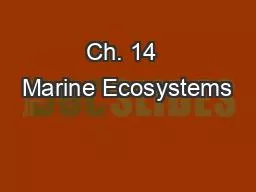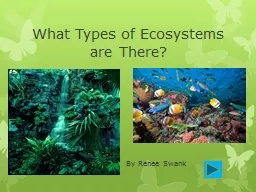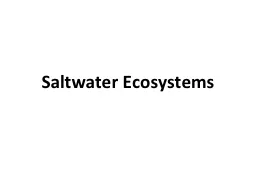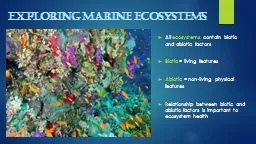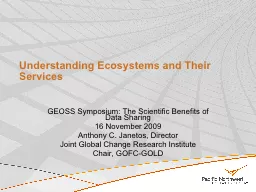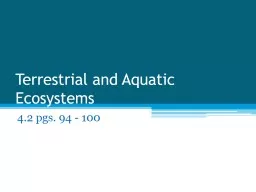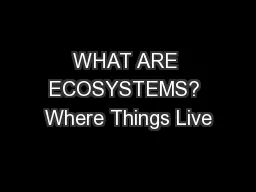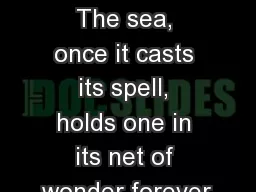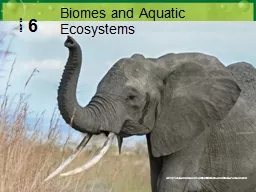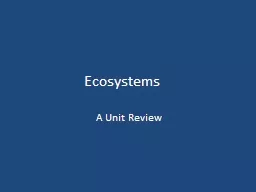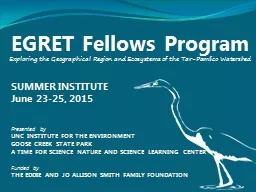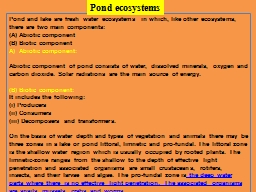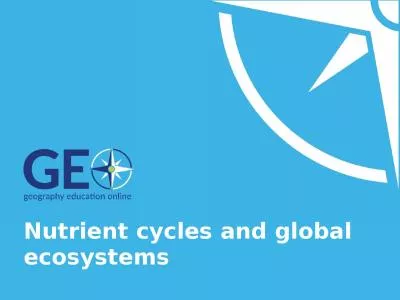PPT-Ch. 14 Marine Ecosystems
Author : delcy | Published Date : 2022-06-28
What is ecology It is the science that studies how organisms relate to each other and their environment Considers both biotic living and abiotic nonliving aspects
Presentation Embed Code
Download Presentation
Download Presentation The PPT/PDF document "Ch. 14 Marine Ecosystems" is the property of its rightful owner. Permission is granted to download and print the materials on this website for personal, non-commercial use only, and to display it on your personal computer provided you do not modify the materials and that you retain all copyright notices contained in the materials. By downloading content from our website, you accept the terms of this agreement.
Ch. 14 Marine Ecosystems: Transcript
What is ecology It is the science that studies how organisms relate to each other and their environment Considers both biotic living and abiotic nonliving aspects Examples of abiotic factors . . Hua. Chen. (. 陈华. ). Department of Biology. University of Illinois at Springfield. Roadmap. Ecosystem degradation, ecological restoration, and restoration ecology . Reference and dynamic reference . By Renee Swank. In this activity you will learn all about the types of ecosystem. You can read all of the material and watch a short video on ecosystems. After you have read the material and watched the video, you can take the short quiz to see how much you learned!!. Types of Saltwater Ecosystems. Ocean. http://app.discoveryeducation.com/player/view?assetGuid. =ef5f2a34-edd4-4a8b-8d55. -. 881e5402994f. . Estuary. http. ://app.discoveryeducation.com/search?Ntt=lake+. All . ecosystems. contain biotic and abiotic factors. Biotic. = living features. Abiotic. = non-living physical features. Relationship between biotic and abiotic factors is important to ecosystem health. GEOSS Symposium: The Scientific Benefits of Data Sharing. 16 November 2009. Anthony C. Janetos, Director. Joint Global Change Research Institute. Chair, GOFC-GOLD. Outline. The context of ecosystem services. 4.2 pgs. 94 - 100. Biomes. A large geographical region with a specific range of temperatures and precipitation, and the organisms that are adapted to those conditions of temperature and precipitation. Living things need a place to live and grow.. . Fish live in water.. Birds live in trees and fly through the air.. Plants grow where there is soil, water and sun.. Main Idea and Details. ENVIRONMENT. - Jacques Ives Cousteau. 2. New Orleans is nested between the mouth of the Mississippi River and the brackish estuary of Lake Pontchartrain.. 3. A series of floodwalls, or levees, protects the city from ocean surges from large storms.. CHAPTER. Too Much of a Good Thing?. Elephant populations in southern Africa declined sharply due to hunting but have made overwhelming comebacks within nature reserves and parks.. Some worry that elephant overpopulation is causing a decline in local biodiversity and damage to farms and infrastructure.. What are Ecosystems? . Groups of living things and the non-living environment in which they live.. The people that study ecosystems are called: . “ecologists.”. Let’s look at the living parts of the ecosystem:. SUMMER INSTITUTE. June 23-25, 2015. Presented by. UNC INSTITUTE FOR THE ENVIRONMENT. GOOSE CREEK STATE PARK. A TIME FOR SCIENCE NATURE AND SCIENCE LEARNING CENTER. Funded by . THE EDDIE AND JO ALLISON SMITH FAMILY FOUNDATION. Ocean Zones & Ecosystems. Freshwater Zones & Ecosystems. Related Ecology. Benthic Division. 6 Areas. . 1. Supralittoral zone. (supra= upper, litus=shore). . Water splashes but does not stay submerged. (A) . Abiotic. component. (B) Biotic component. Abiotic. component:. Abiotic. component of pond consists of water, dissolved minerals, oxygen and carbon dioxide. Solar radiations are the main source of energy.. Getting started. You’ll need a notepad on which to make notes as you go along, or you could make notes, paste images, etc. on your device.. You can view these slides:. as a slide-show for any animations and to follow links.
Download Document
Here is the link to download the presentation.
"Ch. 14 Marine Ecosystems"The content belongs to its owner. You may download and print it for personal use, without modification, and keep all copyright notices. By downloading, you agree to these terms.
Related Documents

